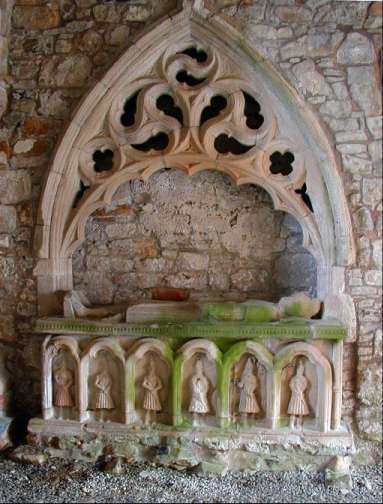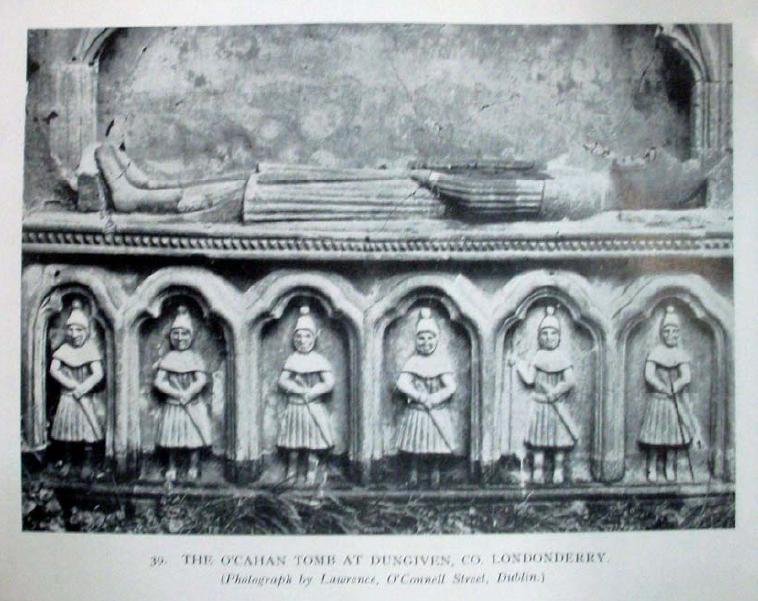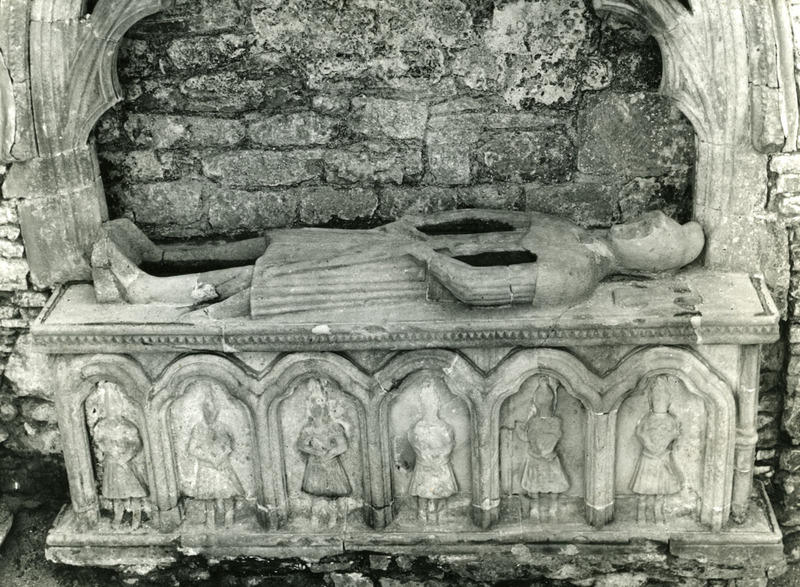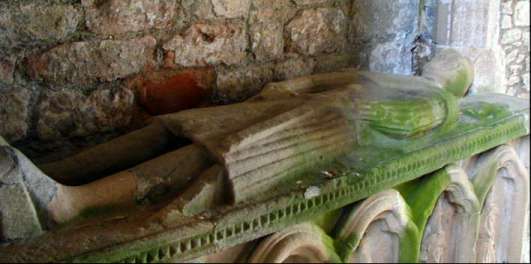Shop Amazon - Create an Amazon Baby Registry

Shop Amazon - Create an Amazon Baby Registry
The Tomb of Ó Catháin,
Dungiven Priory, Ireland, 14th or 15th century

Photo Source: O'Cahan's tomb

39. The O’Cahan Tomb at Dungiven, Co. Londonderry (Photograph by Lawrence, O’Connell Street, Dublin.)
O’Cahan tomb
Dungiven Priory
Cooey-na-Gall Ó Catháin, who died in 1385.
“Cooey-na-Gall” means “Terror of the Stranger”
Source: The Irish Military Tradition by Eddie O’Kane
The Tomb at the Priory of Dungiven is located on the south wall with a stone effigy of a horizontally extended figure at full length, the head-pointing due west.
The figure is wearing what appears to be a quilted shirt.
The legs of this warrior are bare and he holds in his left hand a long sheathed sword which, with his right hand, he seems about to draw.
The main architectual part of the monument is a Gothic arched canopy over the whole tomb. It is approx. 10 feet high and the angles of the carving are still sharp.
The tomb is believed to date from 1384 and is said to be the burial place of the O’Cahan Chief Cooey na Gall O’Cathain.
On the lower part of this tomb are a host of decorative miniature figures supporting the warrior effigy, all are attired in exactly the same manner and all in the same attitude of being ready to draw swords.
These figures are believed to be gallowglass warriors, each wearing a large helmet, chain-armour around the throat and shoulders,
a huge quilted shirt which reaches to below the knees, around the middle they have a sword-belt, and finally bare feet and legs.
The supporting Galloglass figures on the tomb resemble tomb carvings in Athassel, Co. Tipperary.
It was also an Augustinian Priory and served as the retirement and burial place of the Norman-Irish deBurgh family.
The style of the tomb at Dungiven has also been compared with a similar tomb at Iona monastery, representing a chief called Bricrius MacKinnon.
From the detailed study of it’s features the Royal Commission of Iona has stated that the “effigy must be assigned to the second half of the 14th century”.
The style of architect may well have been influenced by the Iona tomb due to Cooey-na-Gall’s daughter being married to a MacDonald Lord of the Isles, so creating a close family and cultural link.
Source: O’Cahans Princes of Ulster

Dungiven (Derry): Priory, O'Cahan tomb niche
Source: “Cahan or St. Mary's Abbey, Dungiven, County Derry - O'Cahan Tomb,” Gothic Past, accessed October 4, 2016

The monument - though heavily restored - is of a very high quality, so much so that the tomb is considered to be unique in Northern Ireland.
It is reputed to be the tomb of Cooey-na-Gall O'Cahan, who died in 1385.
However, the style and the details of the work suggest that it dates from the late fifteenth century and was possibly carved by a Scottish craftsman brought over for the purpose.
The Ordnance Survey memoirs relate that the name of the dead chieftain so annoyed a troop of Scottish Highlanders who were stationed in Dungiven around the end of the 18th century,
that they decided to take revenge and vandalised the monument quite considerably.
Their efforts were wasted, because much of the site was built in the 15th century - long after Cooey-na-Gall O'Cahan had died.
However, it is assumed that an O'Cahan is buried here, possibly Aibhne O'Cahan, who was murdered in 1492.
Source: O'Cahan's tomb
Other Illustrations of Irish Costume and Soldiers
14th century Illustrations of Costume & Soldiers
15th century Illustrations of Costume & Soldiers
Index of Illustrations of Costume & Soldiers





